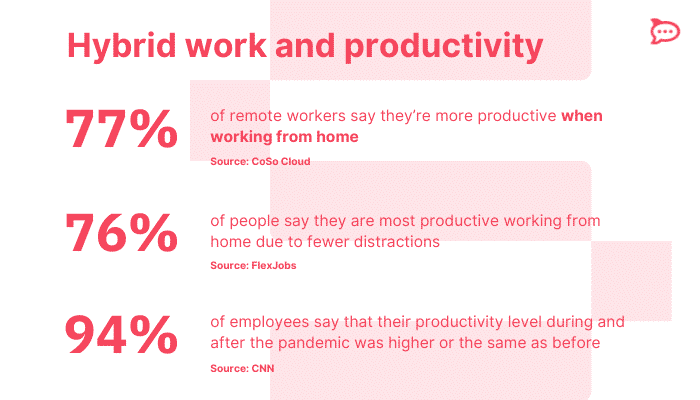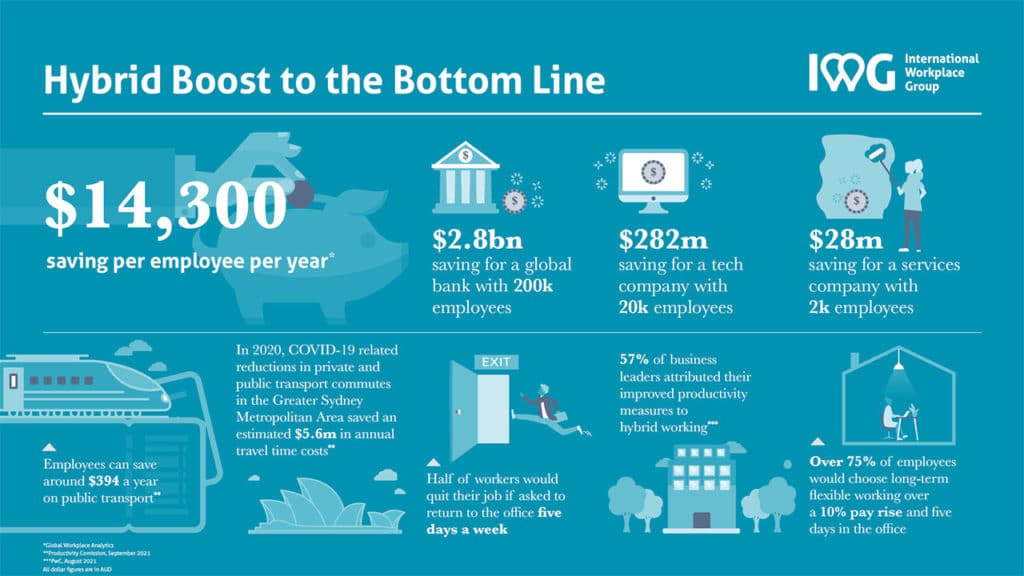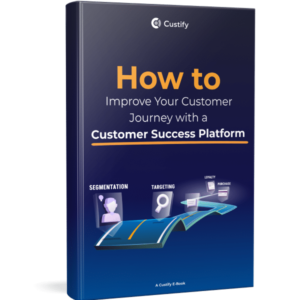If you’re a customer success manager, there’s a good chance you’re already operating a hybrid working model to some degree. If you’re not, you’re probably considering it, with an increase in remote technologies and the shifting expectations of employees making it not only a possibility, but increasingly an expectation.
The pandemic proved that we can work productively from anywhere, after all, then the tentative return to offices suggested there was still value in face-to-face interaction. So, is a hybrid model (where remote and office working coexist) the way forward for customer success teams?
Of course, the term ‘hybrid’ is fairly elastic, and can thus be interpreted in many ways. It could translate to an ‘at-will’ model, for example (in which your employees are offered full flexibility to determine the makeup of their working weeks), or a ‘split-week’ method, which is a more rigid approach in which specific days in the office are mandated. Whichever option you choose, there will be myriad factors to consider and a multitude of benefits to reap if managed well. Naturally, there will also be potential pitfalls to navigate.
To help you decide whether a hybrid working model is the right fit for your customer success team, we’ve broken down the key benefits and drawbacks of a hybrid approach in the workplace. Let’s go through them:
The benefits of hybrid working for customer success teams
Improved health and wellbeing
If the pandemic taught us one thing, it was that we needed to sharpen our focus on our health — both physical and mental. In the workplace, too, we’re more aware than ever of the importance of our wellbeing. While remote working removed the stress of long commutes and reduced the impact of constant, forced social interaction, it led to increased isolation for many of us. There were obvious mental health benefits, sure, but it wasn’t without its drawbacks.
Hybrid working, on the other hand, combines the best bits of a remote and an in-person environment (reducing the need for commuting and the risk of social burnout while maintaining important human-to-human interactions) to strike a healthier balance between life and work.
In truth, life and work are rarely in perfect balance (one too often gets in the way of the other, and vice versa) but a hybrid working model means your teams can more effectively prioritize one over the other when it makes sense to do so. It also means they can more seamlessly incorporate life’s necessities like childcare into their working days, with increased flexibility meaning those factors are less of a distraction or a burden.
And when commutes are only an occasional concern, their working days are less likely to be laden with stress and fatigue. That’s undoubtedly a positive for a customer success team, since team members are less likely to take sick days and their working hours will be spent more productively — leading very nicely into the next point.

Source: Rocket.chat
Increased productivity
Misgivings about remote working leading to work shyness and diminished output have largely been expelled, with many businesses realizing during the enforced shutdown of their offices that productivity was (at the very least) maintained, and in many cases, enhanced when employees were forced to work at home.
With fewer distractions, the avoidance of stressful commutes and a healthier work/life balance, employees were happier, less fatigued and ultimately more productive. A hybrid model takes that a step further, offering full flexibility and empowering teams to work not only where, but when they’re most productive.
Often, the more rigid 9-to-5 pattern of full-time office work can be stifling, but with the freedom to choose when and where they work, your team members can adapt their hours and their locations to suit the shifting needs and demands of their roles: days filled with meetings (where in-person collaboration is key) are best suited to the office, for example, while an environment with minimal distractions is more conducive to days spent clearing through a backlog of routine tasks.
Hours-wise, some work better first thing in the morning, while others hit their stride later in the day. Either way, a hybrid approach is about getting the most out of your team by empowering them to make choices about how they work best.
Higher retention rates
This is a bit of a contentious point, since many would tell you that remote and hybrid working models have in fact decreased employee retention; the argument for that being that a largely remote workforce leads to a decrease in loyalty and a greater likelihood of heads being turned by headhunters.
Realistically, though, this is far more likely to happen if you’re not embracing a flexible working approach, since employees who value the added freedom of a hybrid model will likely look elsewhere for an employer who does. In fact, a survey by Wakefield Research indicated that almost half of employees (47%) would look for another job if their employer didn’t offer a flexible work arrangement.
Of course, your ability to retain top talent will depend on how effectively you implement and manage your hybrid working model; if your approach is clumsy and ill-thought-out, that’s likely to lead to confusion, frustration and itchy feet within your team. If you promise your new hires a fully flexible environment but in reality your approach is rigid and uncompromising, you’ll quickly turn them off, too.
If you get it right, though (and by that we mean nailing the balance between offering genuine flexibility and setting clear boundaries), the freedom offered by a truly hybrid role is likely to keep your customer success team engaged, fulfilled and committed to their roles for the long term.
Lower operational costs
If you’re still tethered to an office environment, your budgets will need to factor in regular (and rising) outlays on rent, utility bills, maintenance and other associated costs. These can often be prohibitive, particularly if you’re based in a prime city center location. In a hybrid environment, however, there’s no expectation (or desire) for a fully staffed office day in and day out.
With teams empowered to make their own decisions with regard to their working environments, there’s less need for vast office spaces and row upon row of allocated desks. This may even give your company the option of downsizing, which will help to streamline resources and avoid unnecessary expenditure.
A reduction in operational costs is a win for a customer success team, because it means more of your company’s resources can be directed towards projects and initiatives that genuinely benefit the customer in the long run. According to a study by International Workplace Group (IWG), the worlds largest flexible workspace company, the hybrid work model is set to expand over the course of 2022 and beyond.

And with less being spent on office-related necessities, more focus can be put on growing, developing and rewarding your team (from recruiting new talent with the help of talent acquisition software, to offering more attractive financial incentives, to prioritizing team training and development), leading to a more adept, more engaged workforce; again, it’s the customer who’ll benefit the most from this more dynamic use of resources.
The disadvantages of hybrid working for customer success teams
Barriers to collaboration
If your approach to hybrid working is flexible, you could end up with a discordant workforce where some spend all their time working remotely, others are in the office most days, and the rest split their time equally between the two. Offering that level of freedom isn’t necessarily a bad thing, but it can obstruct collaboration, meaning that meetings can be an unpredictable (and sometimes unproductive) affair, and project management can present more of a challenge.
Certain things are simply out of our control when we’re working remotely (from the inconsistency of our Wi-Fi connections to the incessant barking of the neighbor’s dog), which can lead to challenges when collaborating with office-based colleagues.
Of course, collaboration relies upon the fostering of meaningful relationships between team members, and that doesn’t just apply to meetings or project updates. Virtual collaboration tools like Teams and Slack are great at keeping hybrid teams connected, but they can’t replace the “water cooler” chat or the general office natter you get when everyone is in the same room.
To that end, it’s important that “off-topic” chat isn’t sidelined (even if most of your workforce is remote) and that you don’t underestimate the importance of the social aspects.
Remember, colleagues don’t have to be physically close to foster healthy working relationships.
Potential for burnout
If left unchecked, a hybrid model does have the capacity to increase employee burnout within a customer success team, since more time spent working remotely often leads to extended working hours and an inability to ‘switch off’. On the other hand, employees who regularly attend the office will have to navigate daily commutes, often exacerbated by traffic or public transport delays. A more flexible working model has the potential to increase employee output, sure, but it shouldn’t add unnecessary pressure or create an environment where your employees feel the need to regularly outdo themselves.
Firstly, it’s important to ‘check in’ on your team once in a while. That doesn’t mean tracking the hours they’re putting in, but more keeping an eye out for red flags. Do they seem tired or distracted? Has the quality of their work declined? Are they frequently sending emails outside of work hours?
Secondly, ensure that you’re not stretching your team too far. If you’re constantly emailing at the end of a working day asking them to jump on an ‘urgent’ task, that’s a recipe for burnout and a fast-track to a resignation letter. Set reasonable expectations, and encourage regular feedback from your team to ensure they’re not feeling under too much pressure.
Difficulty onboarding new starters
While remote (and subsequently hybrid) working has brought many benefits to the workplace, it’s not always conducive to a smooth hiring and onboarding process.
For one thing, it’s made the recruitment landscape a little more rocky (with businesses struggling to attract suitable talent), but it can make the process of taking on and training up new staff a little clunky, too, with inconsistent schedules and a confusing mix of remote and in-person communication making those precious first few weeks tricky. Luckily, solutions like Freshteam can streamline HR workflows and make it easier to take on employees remotely.
If you’re willing to offer a fully flexible working environment (allowing your teams to choose precisely when and where they work), that theoretically opens up the possibility of taking on remote team members from anywhere in the world. But while that means you can dip into a far wider international talent pool (potentially combating a scarcity of local candidates) it only increases complexity when it comes to onboarding.
It won’t remove language barriers or ease the awkwardness of remote introductions, but leaning on an employer of record service from a global HR solution like Remote will at least ensure payroll, benefits, taxes and local legal requirements are taken care of, making the onboarding process that bit smoother.
Potential for conflict
If you’re operating a hybrid model within your customer success team, you need to be mindful of potential conflicts arising from disparate working schedules and setups.
Of course, the potential for internal disputes will depend largely on the flexibility and freedom you offer your individual team members; a fully flexible approach where self-reliance is encouraged might offer the best work/life balance, but resentment could arise if certain team members feel that others are taking advantage of the system or not pulling their weight. Conversely, a more rigid approach with mandatory office days offers less in the way of freedom, but it might cut down on conflicts if your team’s working patterns are more aligned.
When you’re communicating through a screen rather than face-to-face, there’s potential for friction there, too (a quick Google of ‘Handforth Parish Council Meeting’ will attest to that). Remote communication can sometimes be a little stilted, with colleagues often talking over each other and points being lost in translation.
Body language is harder to pick up on (even harder if some attendees prefer to disable their cameras) and tone can sometimes be misinterpreted, often derailing otherwise constructive dialogue. Whatever approach you take, it’s important to set clear guidelines and expectations, encourage regular feedback and make the most of face-to-face time when you have it.
Conclusion
Let’s face it; implementing a hybrid approach within your customer success team is no simple feat. There are undoubtedly pros and cons to consider, but if managed effectively those drawbacks can easily be overcome. If you can turn those potential obstacles into opportunities (which is possible through the use of technology combined with astute management) the benefits will be plentiful — from streamlined productivity to increased engagement — which will ultimately lead to a better experience for your customers.




